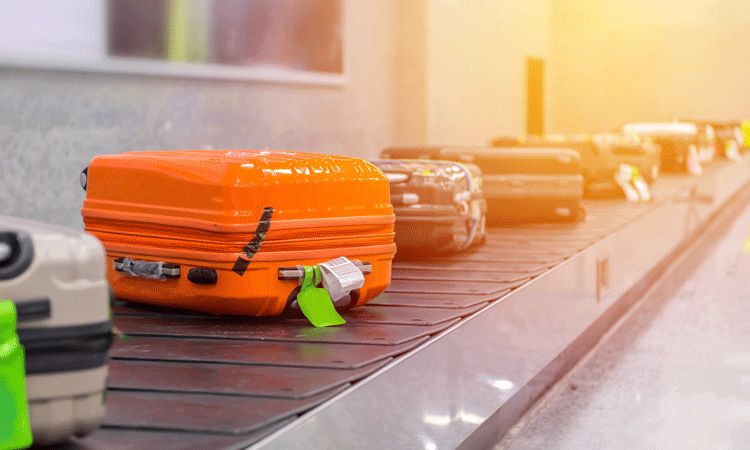Baggage handling: Let’s think outside the box
- Like
- Digg
- Del
- Tumblr
- VKontakte
- Buffer
- Love This
- Odnoklassniki
- Meneame
- Blogger
- Amazon
- Yahoo Mail
- Gmail
- AOL
- Newsvine
- HackerNews
- Evernote
- MySpace
- Mail.ru
- Viadeo
- Line
- Comments
- Yummly
- SMS
- Viber
- Telegram
- Subscribe
- Skype
- Facebook Messenger
- Kakao
- LiveJournal
- Yammer
- Edgar
- Fintel
- Mix
- Instapaper
- Copy Link
Posted: 15 June 2022 | Antoine Rostworowski | 1 comment
Antoine Rostworowski, Senior Vice President, Programmes and Commercial Services at Airports Council International (ACI) World, discusses the future of baggage operations and the opportunities this will give airports.


Prior to the COVID-19 pandemic, I remember almost always including a slide in my various presentations showing that the number of passengers and baggage worldwide was expected to double by 2040 (if not earlier). This was a challenge, but a nice problem to have for the industry – especially now, when looking at passenger volumes since 2020. We know all the challenges the industry is still facing getting back to 2019 levels, but we must also ensure not to forget about the expected doubling of passenger volumes worldwide, which is still expected, even if this happens a few years later than our initial 2040 projection.
The doubling of passengers, baggage, and flight volumes does not mean doubling of present infrastructure and processes, which is simply impossible to do. We need to think outside the box, be bold and rethink both our processes and tools.
The main global checked baggage process has not really changed much during the past 30 years: passengers bring their bags to the airport terminal, have them tagged and dropped in a sortation system, loaded to the aircraft, and then the reverse process takes place at the arrival airport, until the passenger picks up their bags at the arrival baggage carousel. The other day, I surprised myself watching an aircraft turn around at an airport, seeing ground handling staff bulk loading by hand using a few belt loaders, a few baggage carts and a tractor – pretty much the same way it was done when I started in the industry over 30 years ago. The industry has, however, greatly improved the technology for the airport bag drop, sortation system, tracking of bags, modern baggage reconciliation systems (BRS) and exchange of data between stations. I am one of the few business travellers which tends to almost always check in my bags and trust the system, contrary to many industry colleagues. I like travelling light and enjoy the journey more this way. I have to say that baggage sortation systems and processes have become very reliable, especially during the past 15 years. Data demonstrates this fact and the great improvements the industry deployed over time. The 2021 SITA Baggage IT Insights report stated that between 2007 and 2020, the mishandling rate per thousand passengers has reduced by 81 per cent, from 18.88 bags to 3.5 bags – great results!
The last paper process in the travel journey
The one thing that we must realise, is that the last piece of controlled paper document remaining within the travel process is the baggage tag. We got rid of the paper flight ticket about 15 years ago, same with ‘controlled’ paper boarding passes, which can now be digitally generated on your smart phone – but we are still stuck with a controlled paper bag tag. We depend on this piece of paper to ensure the baggage gets to its destination. In a smart airport/airline era, in our digitally transformed industry, this needs to be addressed if we truly want to become more efficient and deal with larger volumes in the future. Several technological solutions are available: RFID, NFC, electronic digital tags, and we’re talking now about baggage image capture – the equivalent of biometrics for baggage – used to track a bag. No more paper bag tags, but the use of permanent bag tags, integrated technology within the bag itself, or just the image of a bag to be able to track it and send it to the right destination.
We’re talking now about baggage image capture – the equivalent of biometrics for baggage – used to track a bag. No more paper bag tags, but the use of permanent bag tags, integrated technology within the bag itself, or just the image of a bag to be able to track it and send it to the right destination”
The challenge here is usually getting the required number of initial deployments to make the business case work, as it can get fairly expensive for early adopters, but much easier to justify when the majority have deployed it. From my point of view, permanent digital bag tags seem to be the easiest change to be deployed in the near future, as this technology does not require airports to invest in expensive changes for their bag scanning technologies and facilities. 1D bar codes printed on paper today would remain, but would just be digitally produced through a permanent digital bag tag display. The big impact: no more paper bag tags and related printers, no changes to bag tag readers required in worldwide airport sortation systems, enhanced efficiency, and lower expenses. A clear positive business case – but airlines and airports need to work together to make this happen and ensure a common standard is adopted.
New processes bring new opportunities
Another key opportunity to increase capacity and throughput of baggage is to maximise the number of baggage-related transactions and handling performed off-site from the airport, earlier in the passenger travel journey. More choices and options need to be provided to passengers to check in their bags, based on their preferences and personal profile. Passengers should be able to get the opportunity to have their baggage picked up from home, drop them at a centrally located city bus or train station, their hotel, at the airport parking, or other location. This has started to be offered in certain cities, but remains the exception rather than the rule. A new trend is also to evaluate options where baggage could travel separately from its owner, being able to arrive at the destination before the passenger gets there (airport pick-up, at hotel, or private home delivery). A specific fee structure could be built into this new business model and for each option. Passengers could improve their experience by choosing the baggage process which best fits their needs and airlines/airports could generate savings and/or potential new sources of revenues. Imagine being able to process 50 per cent of checked baggage before passengers arrive at the airport; the baggage sortation system would maintain its capacity even if baggage volumes double. If significant numbers of checked baggage get collected off-airport, this also opens the possibility to consider the relocation of the airport baggage sortation system, or at least a portion of it. This could generate significant savings for the airport, by limiting the necessity to use prime and expensive real estate to sort baggage.
Collaboration to rise to the challenge
True collaboration is a must to accelerate change and facilitate the deployment of new ways of doing things, enabling the industry to rise to the challenge of processing greatly increased volumes of passengers and baggage in the future, providing better and more personalised customer service, in a more efficient manner. Airports Council International (ACI) and the International Air Transport Association (IATA) have joined forces and launched the NEXTT (New Experience in Travel Technologies) a few years back, with the objective to align industry stakeholders, encourage and accelerate change, and facilitate the deployment of new technologies (see: www.nextt.aero). This initiative focuses on baggage, but also passenger, aircraft, and cargo processes. The three main pillars are very well aligned with the various points I shared in this article regarding baggage: off-airport activities, advanced processing leveraging technology and interactive decision making.
If there is one positive thing we might get from the pandemic, it is the opportunity to accelerate change and adapt existing state regulations to allow and facilitate the deployment of new travel journey processes and technologies. Opportunities have been identified and technologies exist – we now need to get all stakeholders to align and get it done.
Biography


Related topics
Aircraft, Airside operations, Baggage handling, Cargo, COVID-19, New technologies, Passenger experience and seamless travel, Terminal operations
Related organisations
Airports Council International (ACI World), International Air Transport Association (IATA)



















Is anyone looking at changing/improving the very last step of baggage handling? As a passenger, you just pick up a bag or two, and off you go – no checks whatsoever.
On the flight to Australia a few years back I picked up someone else’s bag, full of gifts for this person’s family!
My bag (identical) was just left at the airport in Sydney. It got sorted out, and we each ended with the right bag, but just this week coming back from London to Denver it could have happened again! No checks!!!